
THE ARTICLE A CASE STUDY GROUPPARTNERS 2012
The Conflict Early
Warning and Response Mechanism (CEWARN) is a collaborative effort of the seven IGAD Member States (Djibouti, Eritrea, Ethiopia, Kenya, Somalia, Sudan and Uganda) and is one of IGAD’s programmes targeted at mitigating and preventing violent conflicts in the sub-region.

Since its establishment in 2002, CEWARN has been functioning with a particular focus on cross-border pastoralist and related conflicts.
The Mission
To establish itself as an effective and sustainable sub-regional mechanism that undertakes conflict early warning and response, fostering cooperation among relevant stakeholders so as to respond to potential and actual violent conflicts in the IGAD region and contributing to the peaceful settlement of disputes in the sub-region.
Sudan
Eritrea
Djibouti

South
Sudan
Uganda
Ethiopia
Kenya
Somalia
CEWARN x
About
1
The Mandate
To receive and share information concerning potentially violent conflicts as well as their outbreak and escalation in the IGAD region; undertake and share analysis of that information; develop case scenarios and formulate options for response; share and communicate information, analysis and response options; carry out studies on specific types and areas of conflict in the IGAD region.
Through its national network of governmental and non-governmental stakeholders:
Conflict Early Warning and Response Units (CEWERUs),
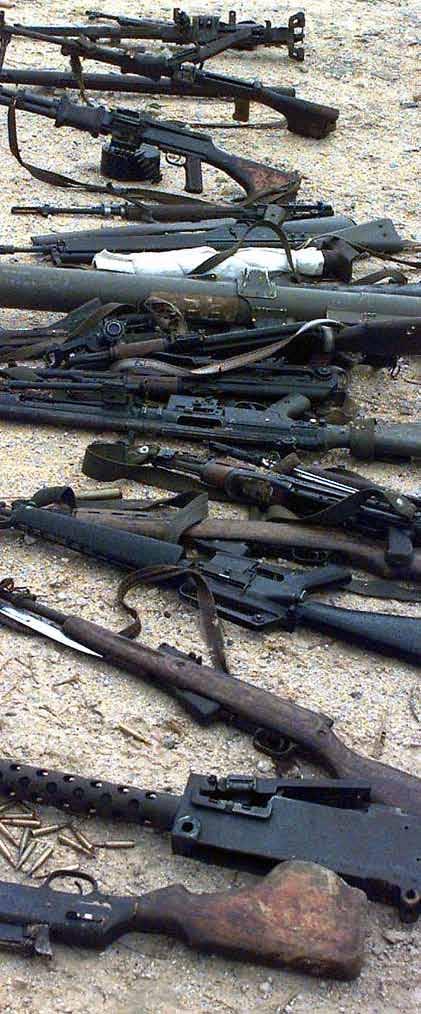
National Research Institutes (NRIs) and Field Monitors (FMs),
CEWARN for most of the past decade has undertaken its conflict early warning and response function in three clusters or pilot areas:
The Karamoja Cluster – covering the cross-border areas of Ethiopia, Kenya, Sudan and Uganda,
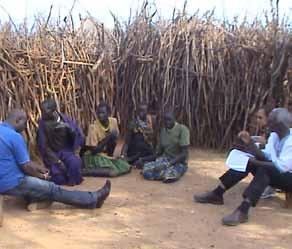
The Somali Cluster – covering the cross-border areas of Ethiopia, Kenya and Somalia,
The Dikhil Cluster – covering the crossborder areas of Djibouti and Ethiopia.
2
The previous strategy and annual plans since the establishment of the mechanism over the intervening decade has seen the legal basis of this regional tool firmly established and its operationalisation achieved to the point that the CEWARN Mechanism is a continental benchmark.
There are many reasons why we wanted to be a part of this initiative – it represents a highly impactful journey for everybody involved – but the more significant aspects for us probably fall within these three areas:
SOCIAL – Our vision is to spend more time working on programmes that add real value – finding ways in which humanity can play a responsible role in tackling the complex issues of today’s societies.
There is a lot of talk these days about Social Businesses – we’d like to put a better definition on that and find ways that we can use our tools and techniques to create meaningful change in the way organisations think about meeting these challenges.
In May 2011, the 10th Committee of Permanent Secretaries, representing the member states, asked CEWARN to develop a new strategy that would expand the thematic and geographic coverage of its work, strengthen its institutional capabilities, and extend its partnerships and capabilities as a network.
INTELLECTUAL – Our Practice is built around our fascination – and respect – for chaos and complexity combined with a whole systems approach through the use of Structured Visual Thinking™ techniques.




Everything we have built – and continue to build – is based on the belief that as individuals and teams we need better ways to tackle the challenges we face. We have proven that we all need to find better ways of thinking and performing to tackle these challenges – becoming more dynamic and responsive to change – and that this requires us to think in terms of the entire system within which we operate.
It just happens that we have combined a number of concepts and theories with a high
starting the journey...
x x x
x 3
Group Partners was introduced to the CEWARN challenge through a long standing partnership with Adewale Ajadi – best described as a Transformation Entrepreneur who has played a facilitating role with the CEWARN team throughout this process.
degree of creativity brought alive through visualisation and collaborative endeavour.
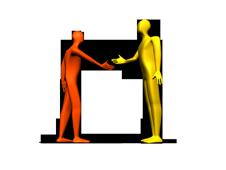
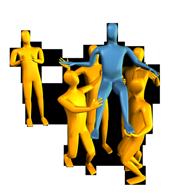
EMOTIONAL – Africa has always had a special place in our hearts and we have huge respect for the inherent wisdom and values that we discover whenever we have the privilege to work with teams on this Continent.
We always find that almost everyone we meet has a strong affinity with the idea of connection – they witness so much complexity in their world every day – so there is a lot we can learn when it comes to becoming adaptive and responsive.
Our desire is to learn and share the experience.
Our task was primarily to use our approach and tools to draw together the many dimensions of the process that was planned for building the strategy. To be totally honest we had no real sense of what we were about to take on –other than it grabbed our attention from the very start – as Adewale had known it would!
CEWARN WAS THEREFORE A DREAM PROJECT FOR US!
• A courageous approach being taken to developing strategy that had never been tried on such a scale.
• A genuinely important and wicked problem – a wicked problem is a form of social or cultural problem that is bedevilled with multiplicity – making it difficult to solve because of incomplete, contradictory, and changing requirements.
• The opportunity to put our beliefs and techniques to one of the toughest tests ever and make a real difference across an entire region.
• A sense of real commitment and dedication from the team we would be working with.
the attraction
Partners...
for Group
x x
x
x 4
The idea of applying collective insight and wisdom to develop the new strategy for this mechanism in a bottom up manner was both inspired and brave! This programme had to be allowed to evolve naturally while having enough structure to give reasonable certainty that a coherent strategy would emerge.
This thought is at the heart of the latest and most insightful understanding about systems thinking – as applied to living systems.
In this programme we were incredibly lucky to be working with people who through their experience of working on multiple social levels and communities had a growing desire to seek out new tools and approaches that would allow them increased effectiveness and relevance.
Serendipity and the nurturing of value networks had much to do with all of us coming together. Key was our past work with Adewale on projects such as the production of a framework for the regeneration of the city of Ibadan in Nigeria.
And also the speed with which the CEWARN team, hearing of this collaboration, was quick to see its relevance to their strategy development process.
We joined our techniques to a programme that had evolved from intense conversations between CEWARN staff and Adewale who had served as the facilitator of a retreat for the team in August 2011. At that retreat, the decision was made to engage with the people and develop a strategy from the bottom up.
This in a way was an attempt to more deeply realize a century of Pan-African aspiration that holds true progress to be rooted in the living customs, collaborative methods and priorities of African peoples.
What the process required was an approach to structuring and presenting the data that would allow a shared strategic vision to emerge while honouring the contributions of a multiplicity of actors.
These core principles of living systems continue

5
“All living systems (including our own human systems, as much as we may deceive ourselves to the contrary) emerge naturally, with chaos as the over-riding organising force.
While we have become aware of operating principles, rules, patterns and order within nature, it is chaos that is the over-riding organising force of life, eluding predictability – ordered yet spontaneous, one of life’s beautiful paradoxes. Societies and economies are emergent, beyond control.

Though predicting the future may be appealing, it is through understanding and aligning ourselves with the basic rules of nature that we can navigate optimal pathways for future success. Self organisation, complexity and chaos operate the eco systems within which we live and work.”
The Nature of Business, by Giles Hutchins.
Especially an approach that would allow the views of the many at the local level to remain relevant during consultation at the more rarefied reaches of policymaking at the national and regional levels. What was needed was simplicity without losing complexity.
And even more, trust between the Group Partners team and CEWARN as each approached new territories of work with a need to work together.
“The temptation when working at the regional level is to conference and make bold statements. But the CEWARN mechanism is driven by a bottom-up approach, that is solutions are often local even if the problems are national or international. CEWARN wants to be rooted in localized solutions and needs to fit ourselves into the early warning mechanism.”
CEWARN Director Dr. Martin Kimani.
to guide and shape the programme as it moves into the next stage of its journey
6
The Critical Context













One of our earliest observations was the challenge in even describing the CEWARN mechanism. Martin was very clear in his views and concerns about the perception that comes from a word like ‘Mechanism’.
While it is an accurate description, it can easily lose the living and dynamic nature of the role of CEWARN and doesn’t do justice to the part played by so many in the CEWARN Network. One of the challenges we are working to overcome is the perception that this is a mechanism owned and managed by a team in Addis Ababa – as opposed to the entire network across the Horn of Africa.
“All our livestock have been taken by the Toposa and this fellow is still talking peace. Where is the livestock he purports to protect? He keeps irritating us by coming back to us; do I shoot him to keep him off forever?”

“We no longer collect wild fruits or undertake wild hunting because of insecurity in our ancestral land. This concentrated camp has transformed us into women. The future is bleak.”

It’s hard even after a year to find an easy way to describe CEWARN!
7
Mzee Erupe of Lokwamosing
Elder Erot of Nanam Village.
Uganda
South Sudan
Sudan
The Network







The use of the word Network was introduced very early on in the programme and is still a good reflection of what is emerging here –this is an eco system that has all the critical attributes and characteristics of a living system and the programme first envisaged by Martin and guided by Adewale.









This created the ideal conditions for us to apply some fundamental systems thinking principles to the approach we eventually shaped together.



















8
Ethiopia
Somalia
Kenya
Djibouti
Eritrea
There were some core principles that we had to build into the programme that would remain consistent throughout:
A building of insight and contribution from the bottom up.
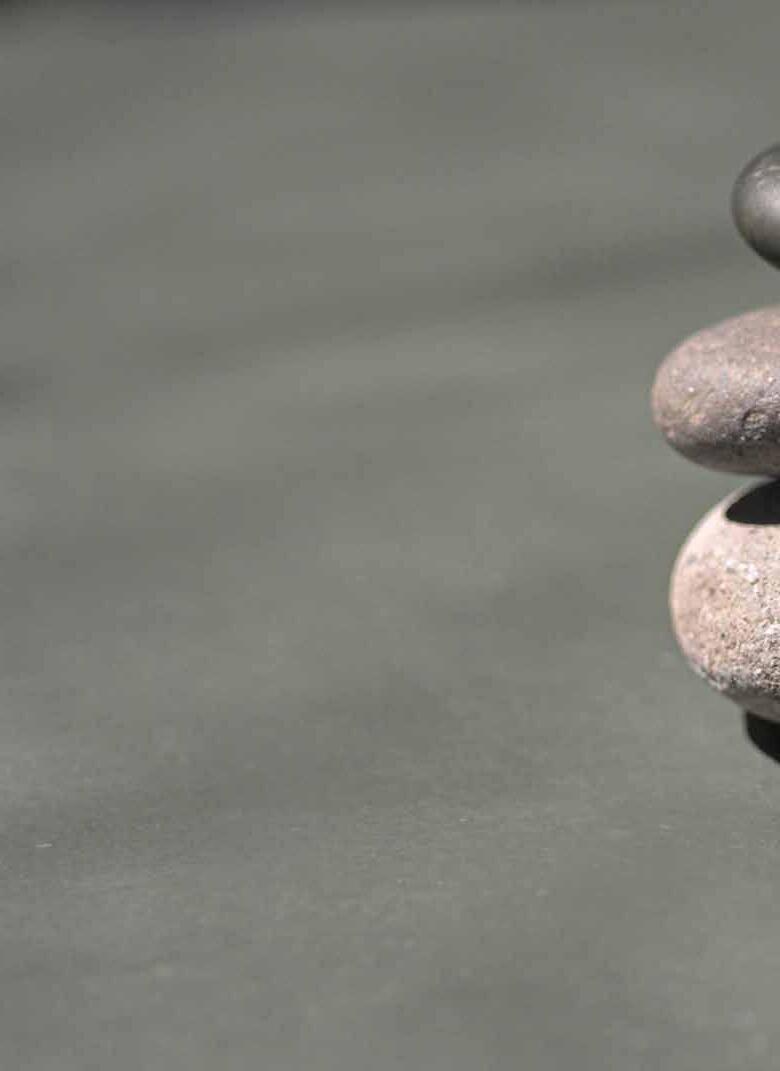
A number of consolidation points.
Everything eventually combining to inform the strategy.
Theory of change:
“That high quality, credible information and analysis on emerging threats to peace and security, delivered in timely fashion to the right individuals and institutions will lead to decisions that increase peace and security in the IGAD region.”
“The teams talked to many people and tried to talk to traders, youth and women. Enormous amounts of material were gathered and CEWARN tried to create a simple way to visualize the information that was received or encountered.”
by CEWARN Team.
9

T H E S T E P P I N G S T O N E S 10
Our team made up of CEWARN staff, us at Group Partners, and Adewale started this process by establishing some primary questions that we wanted people to be asked at the ‘Field’ level.
What became clear is that the demarcation of field versus HQ is an idealisation of reality that is meant to somehow contain the enormous complexity and size of millions of human beings interacting. The ‘field’ in other words is life. No matter how long the CEWARN team and its local facilitators held the trips and conversations, they would still represent only a drop in the ocean against the population and size of the region. The questions had to be generic enough to be relevant to extremely diverse interviewees and yet able to repay the effort with real granularity.
Following a workshop facilitated by Adewale between the CEWARN staff and experienced local facilitators, we helped shape an approach to collating and synthesising the data that would be received from the local conversations.

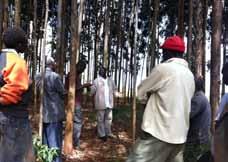



The CEWARN Unit undertook a huge number of interviews and meetings across the Horn –wherever it was feasible and safe to go in the areas the Mechanism has been working in – to get the views of local communities and peoples. This covered a diverse group of the most important stakeholders – the elders, the women, market traders, youth, officials – anyone who could offer insight into the conflict challenges that can turn violent, and provide valuable clues as to the causes. And we wanted also to hear what they thought were solutions and what an ideal future would be for them.
ONE :
Each Cluster represented had two visual devices per Nation. One that considered the many dynamics per nation and the second that provided a high level assessment to a consistent structure.
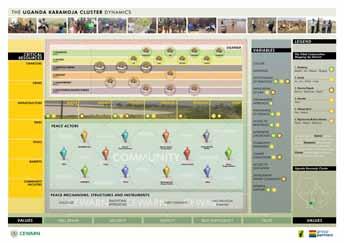

11
This is a combined visual of all Nations and their suggested Areas of Reporting (the Conflict Hotspots) plus the information that has in some way or other been identified as valuable to either early warning, prevention or resolution.
THEY TOLD US!
The CEWARN team sent us incredible reports of everything they had learned – we received stories of floods and impassable roads, we heard of the real-life consequences of violence for people in the community as they told their own personal stories and we received deep insights from the team based on what they learned.
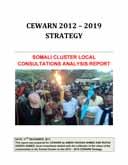


We then spent days (in fact weeks) synthesising this material to draw out the most significant insights and establish a common structure against which we could compare the perspectives to look for common issues, variations of challenge and dynamics and the common drivers of conflict.



All of this work ended up in a series of visual devices that captured a consistent view of each ‘Cluster’ represented.
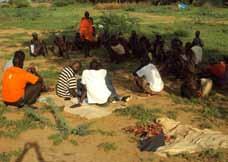
12
Without peace there will be no future and development.
Women are now involved in peace meetings. They have a voice, and the amplification of their voices is giving them an opportunity to change the environment.
There will be joy, trust, good security, improved schools enrolment and contentedness.
The security of our people and children at all levels such as family, village and community at large.

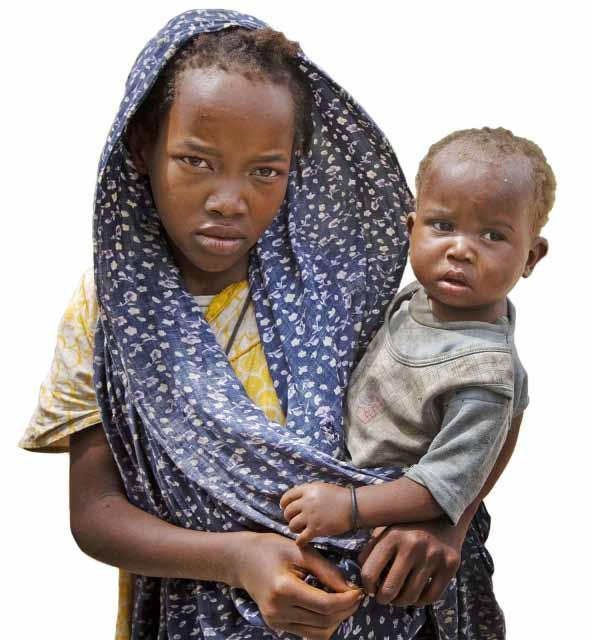
We have realized education is power and light .During time we were denied our right but today am the first person to advocate for education.
There is need to have equitable sharing of pasture and avoid overgrazing which sometimes leads to friction and other incidents such as livestock death.
local perspectives
13
There was also some level of harmony between the Turkana and the Dassanech for their even used to share one elders tree as opposed eating roasted meat together discussing issues that affect the community and whatever the elders agree is communicated to the youth who would obey willingly.
The communities have found a gun like a family of five members can have guns so aspect of negotiating or discussion has become a big challenge.
Historically the Pokot and Turkana used to live harmoniously but could at times kill the Turkana animals using bows and arrows, then moved into stealing calves, they could even kill people, slowly retaliation begun and the conflicts continued steadily up to the time the use of guns came in to the extent now that the entire community has now reached a level of no trust.

They have put up conservancies, military practice grounds and the planned resort city in Isiolo West yet it is also the biggest pasture land, conservancies. What are all these projects doing in one place? They should find elsewhere or do away with them.
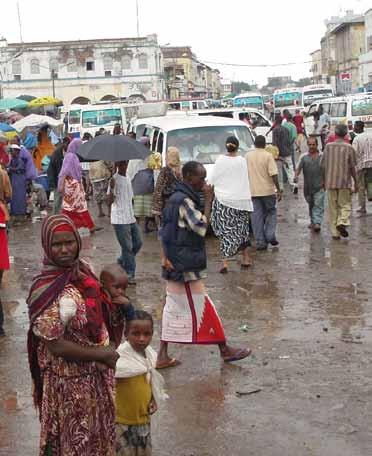
14
Senior government officials and nongovernmental leaders were asked to interact with the visuals representing the views of people at the local level.


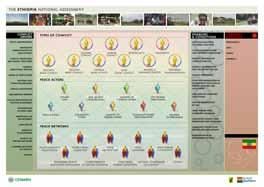

Most of them had never encountered visual tools used in quite this way. From engaging with local views robustly – already a win given the relative rarity of structured views from ‘below’ intervening in national processes –the participants were asked to identify the top threats to peace and security nationally.
They debated the causes, workable solutions and what they considered the ideal future. In other words, the questions had a fractal quality having also been asked at the local level.
In a time when too much strategy development is still top down, the CEWARN team won plaudits from the national players for taking a different approach.
The visual tools and data structuring gave the national workshops that important edge to spark strong debate, aware that the results would join a historic shift in strategy development within IGAD and for most of the participants. This helped strengthen ownership of the CEWARN Mechanism across the Member States.
We then received detailed reports from each meeting – and a new visual emerged, one per country, reflecting the national voice.
“The situation demands a comprehensive and holistic approach that addresses the big picture from a regional perspective. In this respect, CEWARN needs to expand and transform itself into a “Regional Peace Hub” that prevents conflict and builds peace in the IGAD region.”
Djibouti
Somalia
Sudan
TWO : 15
Ethiopia
Kenya

South Sudan

Uganda

A visual of all Nations and their suggested Areas of Reporting (Conflict Hotspots).

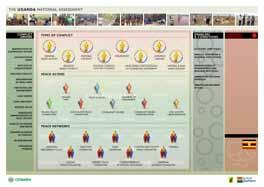


16
When at last we were due to meet the CEWARN team, the process was hiked to the regional level with an invitation to travel to Addis Ababa to join ‘everyone,’ meaning the CEWARN Unit, CEWERU Heads, UN and diplomatic officials, and senior representation from various NGOs and donors. All together nearly 60 people came together in a room for 2 - 3 days to shape the final piece of this puzzle.
The size of this gathering required us to design a specific approach to taking in these final thoughts and making sure that we genuinely represented all stakeholder views in the framework that we were going to build live over these days. That meant a mixture of facilitated discussion and group work.
To support this and make sure that we ended up with a useful framework we designed a bespoke structure that contained enough logic to give us confidence that we would get input that could inform the strategy, without trying to build the strategy at the session itsef.
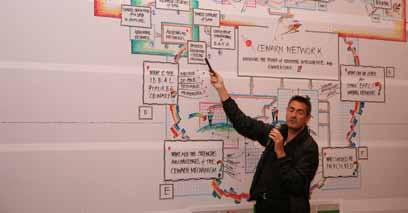


THREE
17
:
The end result was an amazing co-creation that embodied everything that was important to the CEWARN Mechanism and its evolution. Within this framework are the vital clues that will drive the strategy for the next period.

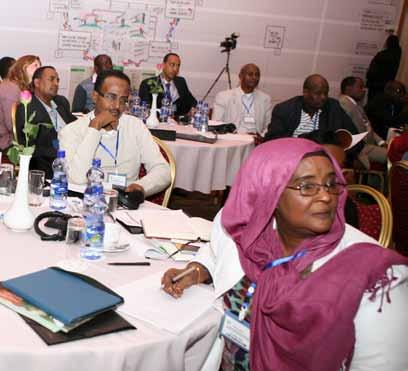

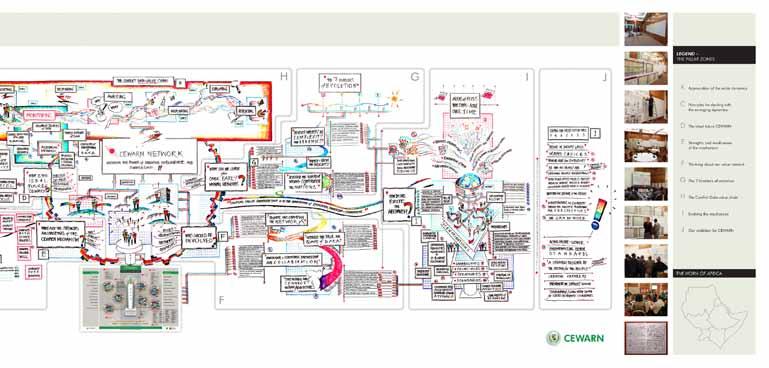
“There is tremendous loss of human lives in Turkana and we in the civil society are dismayed by the negligence of government in the protection of human lives. We are losing an average of 5 people in a day. What should we do?”
The Chief Executive Officer Greater Turkana Civil-Society Network.

18
The final step in this particular journey was to decide what to actually take from this into the strategy that would then be submitted to the CPS. This was primarily a CEWARN activity with us providing the structure – plus some objective facilitation remotely and in person –to aid the thinking and presentation of the context.
We brought in the logic that we use for any strategy at this stage – the same eight questions that we would apply in any engagement when we needed to rationalise and articulate the case:
• What are our Strategic Outcomes – our description of the big prize, in this case for CEWARN? These became the Strategic Objectives of the strategy.

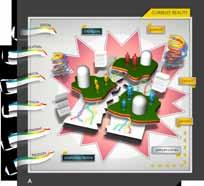
• How will we measure these? – at a high level this question shapes the things that we value most. In time as we develop plans it guides our choice of measures.
• What could get in our way of success?
– we took these primarily from the strengths and weaknesses in the bespoke framework and added any specific challenges to be overcome.
• How would we describe Our Vision? –always hard to distinguish from the outcomes; for CEWARN we settled on a simple but rather profound vision: ‘an IGAD region in which conflicts are resolved peacefully and justly and whose peoples live in shared prosperity.’

• What are the Critical Imperatives to achieving the Vision and Outcomes? – these are the things that will keep us ‘honest’ as we make our plans.
• How will we achieve this? – the Strategies and Initiatives that will get us to our Vision over time.
• What is the Roadmap for the Journey?
– this is the plan of the timescales and milestones that will guide our journey.





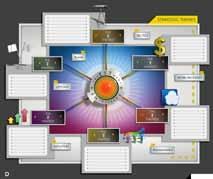
• How do we need to work in the future to sustain this Vision? – this looks at the implications for the way we work and operate on a day-to-day basis.

PRESENTING THE CEWARN STRATEGY FRAMEWORK (Abridged version) 19
The consultation process signals a transition, the end of an ‘old’ strategy and the beginning of a ‘new’ one. The process is marked by brainstorming, consulting, debating, and the exchange of views. Fundamentally the outcomes of this process should address how CEWARN can attain synergy with other structures and expand beyond the current mandate.
The last three questions are being considered in more depth now as CEWARN moves into implementation.
This strategy was submitted to the Committee of Permanent Secretaries – the most senior civil servants serving in government ministries – and wholly endorsed without a single reservation.
Present were Uganda’s First Lady, a powerful politician and policymaker in her own right, and at least three government ministers and the region’s Committee of Ambassadors.
The strong endorsement they gave confirmed the relevance of our tools that we believe will now be increasingly turned to for solutions having previously been virtually unknown in the region.
TAKING THIS INTO OPERATION
The CEWARN Mechanism now has a new strategy that is in the early stages of being converted into real plans and actions that will shape the future of this Network in many ways. The focus is shifting to 2013 and the immediate priorities.

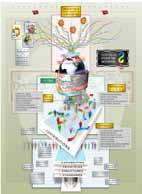



As this phase takes over from the last there will be new challenges and dynamics that we need to take into account. While there has been universal endorsement of the process undertaken and of the outcome there are still questions of ownership and responsibility to address and a lot more joining up to do!
This will require us to revisit the principles of a living system and remind ourselves of what will and won’t work in this model as we help the CEWARN team shape their central operating model and as they support the various other actors – most notably the CEWERUs and other partners – in delivering aligned and value-add plans that continue to contribute to, and shape, the strategy moving forwards.

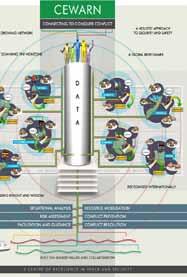
FOUR :
20






















































































